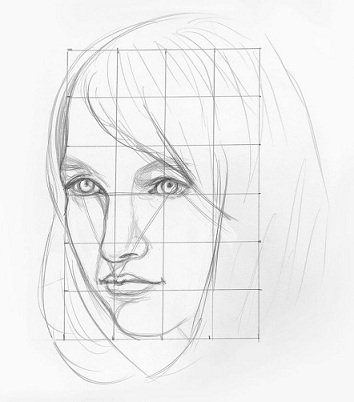Contents
A Beginner’s Guide To Learning to Draw
If you are a beginner learning to draw, this guide can help. Provides friendly beginner tips and tips on learning how to draw the right way and the correct teaching links.
If you are learning to draw, you should start with a pencil and paper. It is a cheap and easy way to practice whether you would like to switch to drawing or digital painting.

Tip # 1 – Draw General
Drawing Grass
This is obvious but still needs to be discussed. Drawing almost anything regularly will help you improve.
Drawing or tracing another artwork will help you build a strong hand that will make it easier to draw as you will have better control.
Tip # 2 – Put Your Drawing In The Drawing Area
Draw the size of the birds in the drawing area
Unless you are making random drawing exercises, you should try to set the size of your drawing to fit perfectly with the drawing area. For example, if you are drawing on paper, try the size of your title again to cover most of the sheet but leave enough space on the sides so that it does not feel like the drawing is too tight. At the same time, make sure that your title is not too small in the drawing area.
Tip # 3 – Make a Light Line Drawing First
A simple dog drawing to complete the drawing
When drawing with pencil and paper, make a straight line drawing without too many details first and then move on to the black lines if you are sure that everything is set correctly and the size you want.
Tip # 4 – Note Line Quality
Line drawing
Try and draw as few strokes as possible using long straight lines. Avoid writing and making too many small strokes to draw one line.
If you are making a clear line drawing as in the previous tip and making a mistake, it is good to draw some lines to correct it. If you still make too many mistakes, it is usually best to clear that part of the drawing and restart.
Tip # 5 – Beware of Ratings
Example of face painting scales
When drawing multiple objects or objects with multiple parts, always try and compare the size and placement of each one.
For example, in the picture above, the eyes are placed directly in the middle of the head. The placement between the eyes is about the width of one eye.
Writing can also help you to avoid making mistakes when something is too big, too small or too incorrect about another.
Tip # 6 – Draw Big to Small
Face drawing in detail
If you are drawing almost anything, try and draw large shapes first and then down to the smallest detail.
If, for example, you are painting the face, first draw the shape of the head and neck followed by the shape of the face such as the eyes, nose, mouth, etc……… After that, you can work your way down to the smallest. details such as nose, students, eyebrows, etc….…
Please note that you do not always have to start with the most oversized format. So if, for example, you are drawing a whole body of a human or an animal, you can start with the shape of the head and then draw other significant parts of the body.
Tip # 7 – Keep The Drawing In The Same Levels Of Completion Throughout
Drawing cat categories
This is related to the previous tip.
Keep different parts of your drawing in the same finishing sections.
If you are drawing two eyes, for example, draw the outer shape of each eye and then draw the letter of each eye. Do not altogether remove one eye and move on to the other.
You want to draw this way because if you focus on finishing just one eye, you may find that it is not placed correctly when you start drawing the second eye. This means that you will have to postpone more work than you would if you were to draw each eye’s surface immediately.
Tip # 8 – Perform Drawing Tests
Drawing exercises, for example
As a perfect beginner, you can do basic drawing exercises to help you progress faster. This includes drawing straight and curved line sets and basic geometric shapes.
Tip # 9 – Read the Visual Graphics and Basic 3d Situations
An example of a vision drawing
Looking at things that seem small as they go away. The idea of drawing can convincingly demonstrate this in the work of art.
There are many tutorials here at EasyDrawingTips on the basics of visual drawing that you can use as a reference.
Tip # 10 – Learn To Make Shade
Examples of types of shading and stroke
Blurring can give a flat object a look at a volume.
There are many tutorials for blurring complex variations here at Easyanimedrawings, from basic stroke and simple 3d shapes to more complex objects.
Tip # 11 – Learn About Color
Colour wheel
Learn about colour theory and the colour wheel.
A basic definition of colour theory can be how different colours can work together based on their arrangement of the colour wheel.
(Finally, there should be a tutorial on this here at EasyDrawingTips too)
Tip # 12 – Examine Your Drawing To See Errors
Matched pear drawing
Sometimes it can be hard to spot flaws in your artwork. One good strategy is to turn your drawing upside down or raise it in the mirror. This will give you a fresh look at your work and make it easier to spot any mistakes.
Conclusion
Learning the basics will allow you to move on to more complex tasks, such as working in various ways. Of course, you can also try new things simultaneously as you learn the basics.

